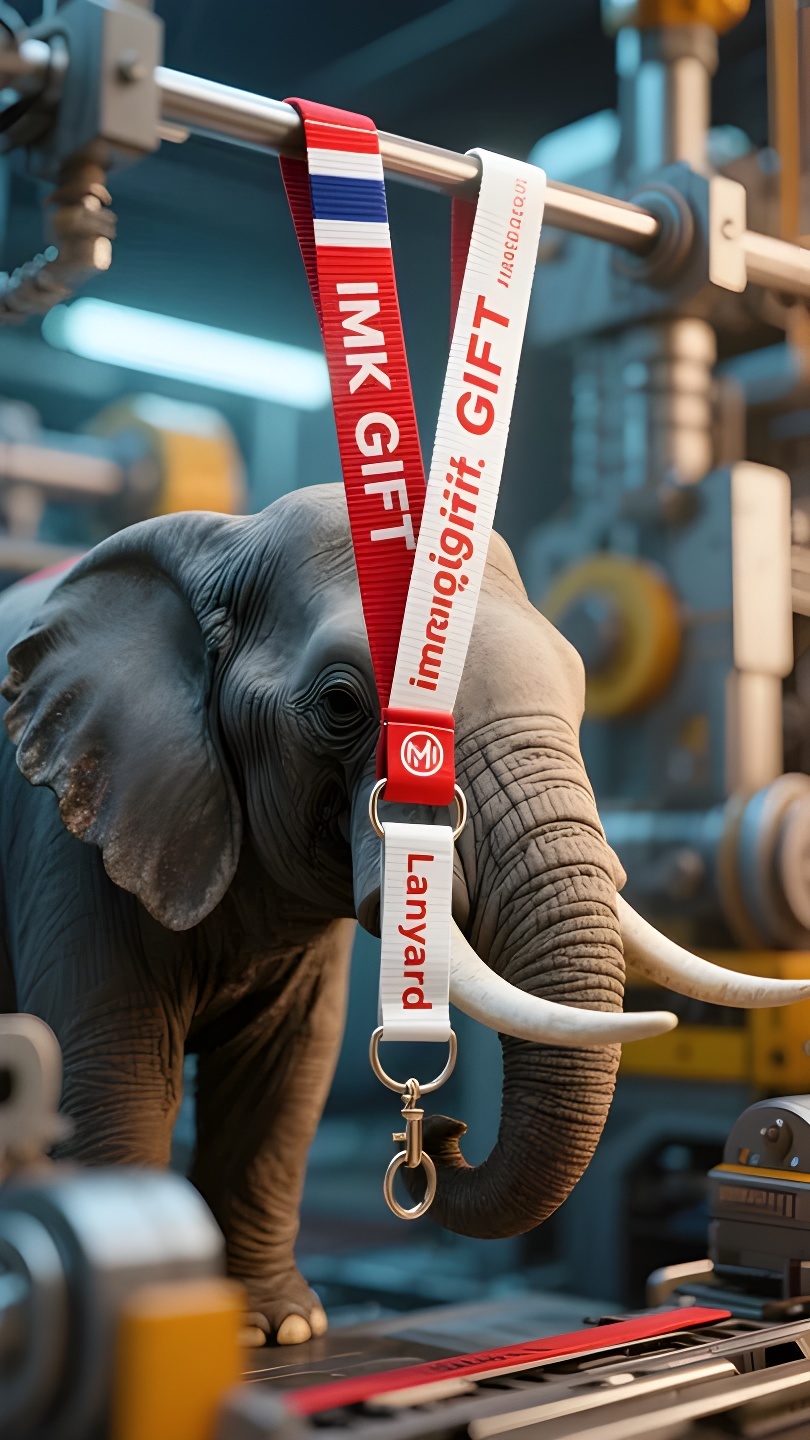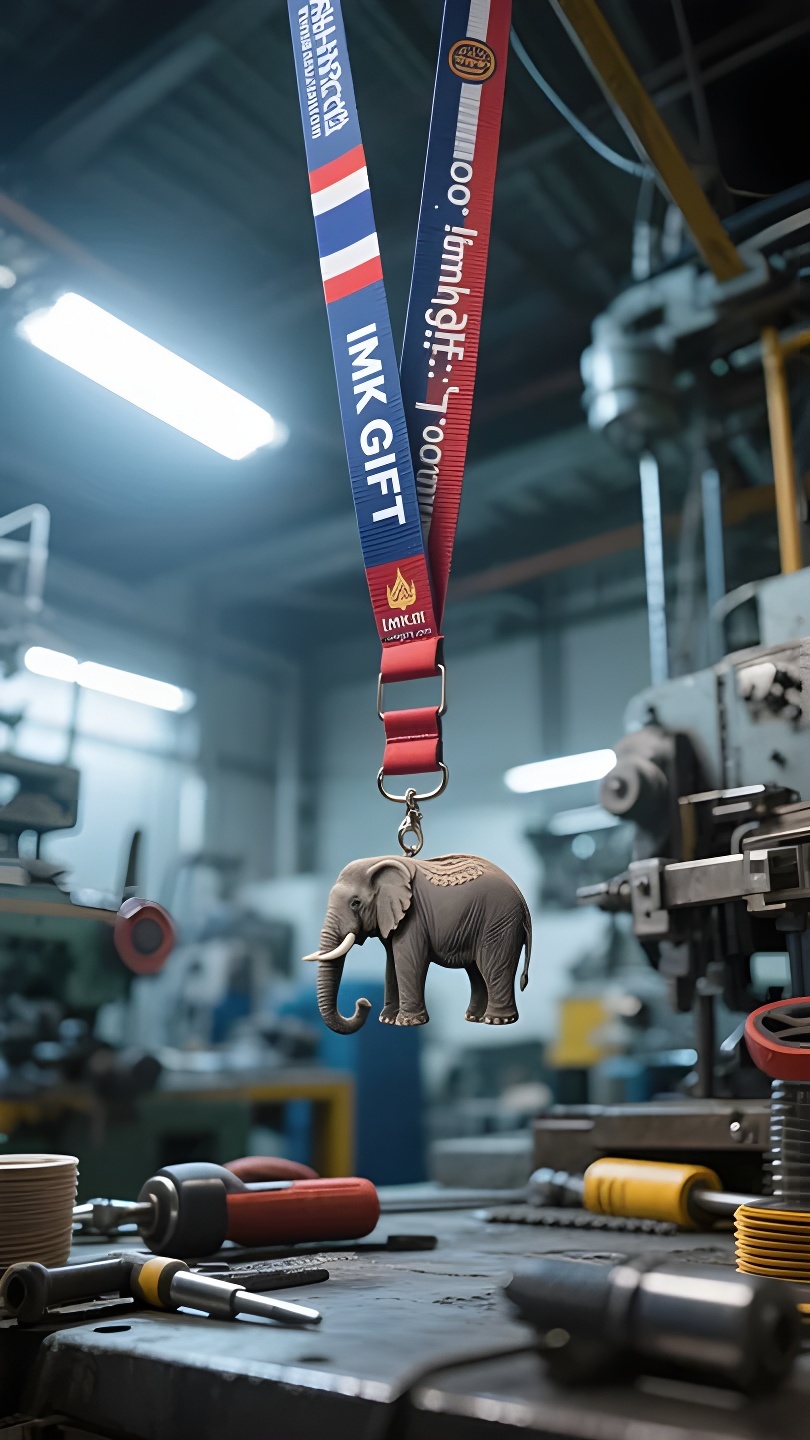in981-เช-อกแห-งพรส-แดง-ขาว-และน-ำเง-น-สานจ-ตว-ญญาณแห-งไทร-นเดด-วยความเหน-ยวแน-น
▼
ในประเพณีไทย เชือกช้างถือเป็นสัญลักษณ์แห่งภูมิปัญญาที่สืบทอดกันมาหลายชั่วรุ่น ผู้คนพันด้ายสีสันสดใสรอบลำตัวช้าง ไม่เพียงเพื่อแสดงความเคารพต่อเทพเจ้าเท่านั้น แต่ยังสื่อถึงชะตากรรมที่เชื่อมโยงกันระหว่างปัจเจกบุคคลและส่วนรวมอีกด้วย เช่นเดียวกับแถบสีแดง ขาว น้ำเงิน บนธงชาติไทย แต่ละสีล้วนบ่งบอกถึงลักษณะเฉพาะของชาติ สีแดงหมายถึงความกระตือรือร้นที่ได้รับจากแผ่นดิน สีขาวหมายถึงความบริสุทธิ์ที่ได้รับการชำระล้างด้วยหัวใจของพระพุทธเจ้า และสีน้ำเงินเข้มหมายถึงความเคร่งขรึมที่ได้รับการปกป้องโดยราชวงศ์ เดือนสิงหาคมเป็นช่วงฤดูฝนในประเทศไทย ผู้คนนิยมทอปมไซซิน ซึ่งเป็นสัญลักษณ์ของการปกป้องคุ้มครอง เมื่อผู้คนพันด้ายฝ้ายที่เปียกฝนและเหงื่อไว้รอบข้อมือ หรือผูกไว้กับรูปปั้นช้างที่ประดิษฐานอยู่ในวัด เส้นลองจิจูดและละติจูดที่สานกันจะเหมือนกับริบบิ้นของธงชาติ ที่ดูเหมือนจะขนานกันแต่ก็รองรับซึ่งกันและกัน ความเหนียวแน่นของเชือกเส้นเล็กแต่ละเส้นเปรียบเสมือนปรัชญาการเอาตัวรอดของคนไทยในกระแสประวัติศาสตร์ที่ใช้ความอ่อนช้อยเอาชนะความแข็งกร้าว และใช้การเชื่อมต่อเพื่อต้านทานการแตกหัก หากคอช้างเผือกดินเหนียวขาดเชือกหลากสีสัน ก็จะสูญเสียความผูกพันกับโลกียะ หากธงชาติที่พลิ้วไสวไม่มีสีก็ไม่สามารถรวมศรัทธาของคนให้เป็นหนึ่งได้อีกต่อไป เยาวชนไทยในปัจจุบันได้แปลงสายคล้องคอแบบดั้งเดิมให้กลายเป็นอุปกรณ์พกพา ท่ามกลางความพันกันของเส้นใยสีแดง ขาว และน้ำเงิน พวกเขากำลังทอไม่เพียงแต่ความทรงจำทางวัฒนธรรมเท่านั้น แต่ยังรวมถึงความแน่นอนของอนาคตอีกด้วย เมื่อแต่ละคนกลายเป็นเส้นไหมอันแข็งแกร่ง ประเทศชาติทั้งชาติก็จะสามารถทอใยชีวิตที่ทนต่อลมและฝนได้ วงแหวนที่ประสานกันของสายคล้องนี้เปรียบเสมือนความลับของการไหลของแม่น้ำเจ้าพระยาที่ไม่มีที่สิ้นสุด – มีเพียงหยดน้ำนับไม่ถ้วนเท่านั้นที่สามารถไหลลงสู่ทะเลได้
In Thai tradition, elephant lanyards carry the wisdom passed down from generation to generation. People wrap colored threads around the elephant’s body, not only to express respect for the gods, but also to imply the interweaving of individual and collective destinies. Just like the red, white and blue stripes on the Thai flag, each color tells the character of the nation: red is the enthusiasm nurtured by the land, white is the purity of the Buddha’s heart, and dark blue is the solemnity of the royal family’s protection. August is the rainy season in Thailand, and it is popular among the people to weave the Sai Sin knot, which symbolizes protection. When people wrap the cotton thread soaked in rain and sweat around their wrists, or tie it to the elephant sculptures enshrined in the temple, the interlaced longitude and latitude lines are just like the ribbons of the national flag – seemingly parallel but supporting each other. The tenacity of each thin rope is a metaphor for the survival philosophy of the Thai people in the torrent of history: to overcome hardness with softness, and to resist rupture with connection. If the neck of a clay sculpture of a white elephant is not decorated with colored ropes, it will lose its ties with the world; if a fluttering national flag is missing any color, it will be difficult to gather the faith of the people. Today’s Thai youth have transformed traditional lanyards into portable accessories. Between the red, white and blue fibers, they are weaving not only cultural memories, but also the confidence in the future: when each individual becomes a tough silk thread, the entire nation can weave a web of life that can withstand wind and rain. The interlocking of these lanyards is just like the secret of the Chao Phraya River’s endless rush – only with countless drops of water can it reach the sea.
在泰国的传统中,大象挂绳承载着世代相传的智慧。人们将彩线缠绕于象身,不仅寄托对神明的敬意,更暗喻着个体与集体的命运交织。正如泰国国旗上的红、白、蓝三色条纹,每道色彩都在诉说民族的品格:赤色是土地孕育的热忱,白色是佛心涤净的纯粹,深蓝则是王室守护的庄严。
八月的泰国正值雨季,这个时节民间盛行编织象征护佑的Sai Sin绳结。当人们将浸透雨水与汗水的棉线缠绕手腕,或是系于寺院供奉的象雕时,那些交错的经纬线正如同国旗的色带——看似平行却彼此支撑。每根细绳的韧劲都隐喻着泰民族在历史洪流中的生存哲学:以柔克刚,以连结抵抗断裂。
一头泥塑白象的脖颈若失去彩绳装点,便失去与人间烟火的羁绊;一面飘扬的国旗若缺了任何一色,亦难再凝聚万众信仰。当今泰国青年将传统挂绳改良为随身饰品,在红白蓝的纤维缠绕间,他们编织的不仅是文化记忆,更是对未来的笃定:当每个个体都成为坚韧的丝线,整个民族便能织就抵挡风雨的生命之网。
这挂绳的环环相扣,恰似湄南河奔涌不息的秘密——唯有无数水滴相携,方能抵达大海。
▼
Contact Us
📞 Tel: +0086-760-85286839
📧 Email: sales3@imkgift.com








